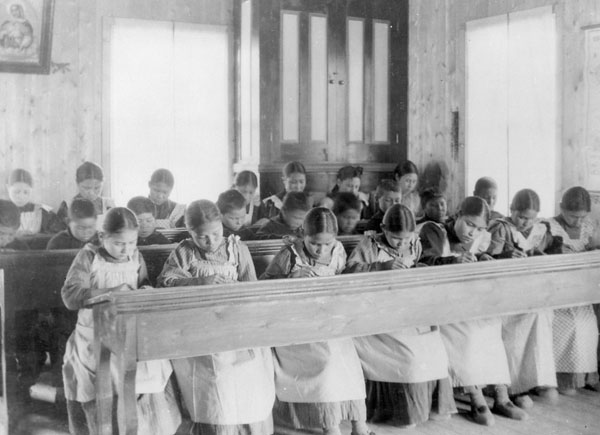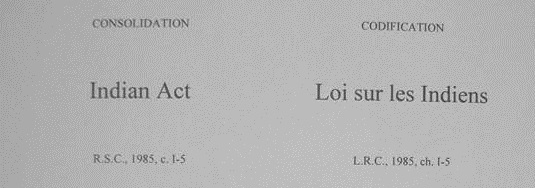An Act to Encourage the Gradual Civilization of the Indian Tribes in the Province was passed by the fifth Parliament of the Province of Canada in 1857. It is commonly known as The Gradual Civilization Act. The Act was part of an effort to assimilate Indigenous peoples. It promoted the adoption of economic and social customs of European settler society.
Description
The Gradual Civilization Act sought to assimilate Indigenous peoples. It did so by encouraging enfranchisement. Additionally, it promoted adherence to the European concept of private land ownership and wealth accumulation. Under the Act, a debt-free, “educated Indian,” who was of “good moral character,” could apply for a land grant from the government. At the time, colonial administrators believed that Indigenous people would benefit from individualized property rights. This went against provisions in the Royal Proclamation of 1763, which recognized Indigenous land rights. Indigenous people were expected to relinquish their treaty rights voluntarily. In return, they would receive land for homesteading and voting privileges. At the time, voting rights were already constrained. There were restrictive definitions of who was eligible to participate in full citizenship rights.
Policy of “Civilization”
There was internal debate between the colonies in British North America on how to best address Indigenous peoples and their rights (see also Rights of Indigenous Peoples in Canada). In pursuing an official act of enfranchisement in 1857, the colonial arm of the British Empire sought to remove the rights of Indigenous peoples. Additionally, they aimed to set a framework to culturally assimilate Indigenous peoples into settler populations.
Imperial Laws
The Gradual Civilization Act served as one indicator of the expansionist agenda of the growing European settler society. At this point, in the late 1850s, the colonies of British North America were on the verge of confederation. The 1857 Act set a precedent for further paternalistic laws (see also Gradual Enfranchisement Act. These laws sought to regulate Indigenous self-determination. In 1876, these Acts were consolidated under the Indian Act. This Act officially sidestepped the rights of Indigenous peoples under the Royal Proclamation of 1763. In total, only one person voluntarily enfranchised under the Gradual Civilization Act. This suggests that Indigenous responses to the colonial law were unfavourable.
Current Criticism
The Gradual Civilization Act, the treaty system and other pre- and post- Confederation laws have been heavily criticized. Critics argue these policies were coercive, inherently racist and lacked regard for the sovereignty of Indigenous peoples. Indigenous peoples were, and are, widely diverse in their political, economic and culture practices. These policies sought to diminish Indigenous peoples’ power to allow for expansion by the growing European settler society. Some have argued that the larger effort to strip Indigenous peoples of their rights under these repressive policies represented cultural genocide (see Genocide and Indigenous Peoples in Canada). With the implementation of the Indian Act in 1876, residential schools became a government policy, and are considered one of the many tragic examples of efforts to purge Indigenous identity.

Significance
The Gradual Civilization Act was one of the concluding acts of the British imperial administration over their remaining colonies in North America. This Act sought to assimilate Indigenous peoples into European Canadian culture. It was a paternalistic policy that ignored Indigenous peoples’ perspectives and sovereignty. This law reflects the nature of colonial policies seeking to discourage Indigenous peoples from expressing their social and cultural customs and values. Policies of “civilization” and assimilation continued well into the 20th century. They resulted in the loss and shaming of important parts of Indigenous identity and social cohesion.

 Share on Facebook
Share on Facebook Share on X
Share on X Share by Email
Share by Email Share on Google Classroom
Share on Google Classroom









